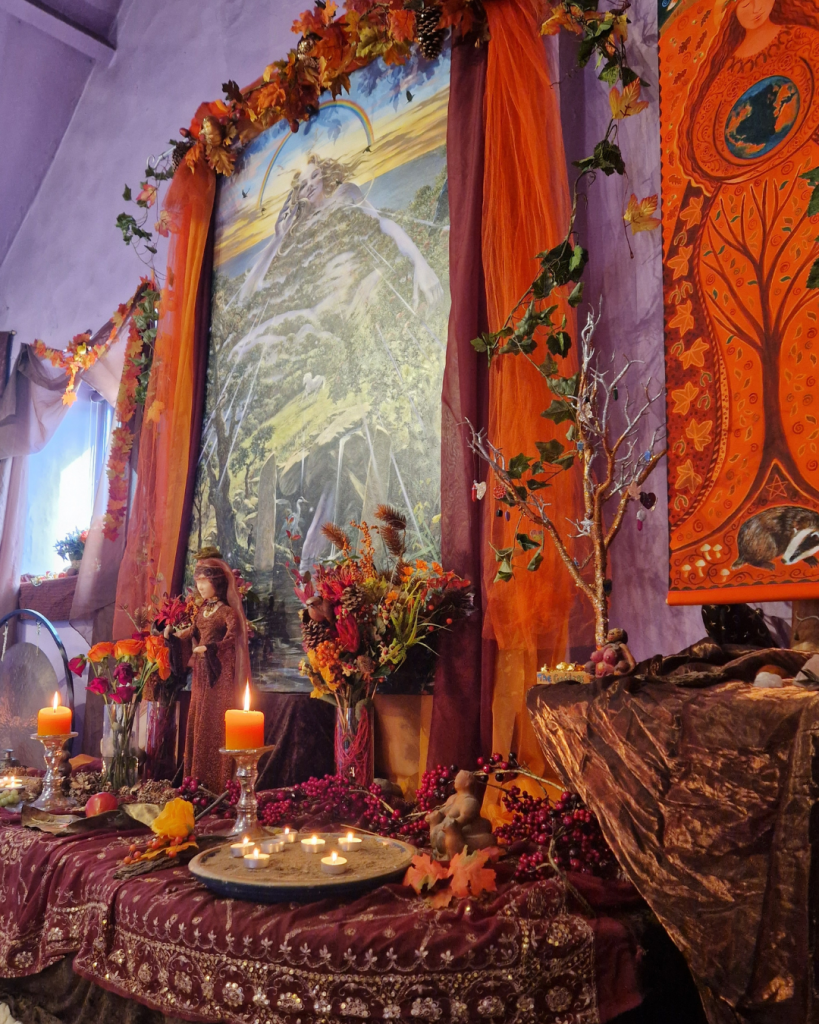Celebrating the Harvest: Delving into Autumn’s Abundance
Mabon, celebrated on the autumnal equinox, typically falls around September 21st to 23rd in the Northern Hemisphere. This sacred festival, also known as Harvest Home or the Autumn Equinox, marks the transition from summer to autumn. As the earth enters a phase of balance, with equal hours of daylight and darkness, Mabon offers a time of reflection, gratitude, and celebration. It is a moment to honor the abundance of the harvest, connect with the rhythms of nature, and prepare for the cooler months ahead. Join us as we delve into the rich traditions and meanings behind this ancient festival.

Meaning and Significance
Mabon holds profound significance in various spiritual and cultural traditions. It is a time to acknowledge the bountiful harvest and express gratitude for the abundance provided by the earth. Symbolically, it represents the culmination of the agricultural cycle, when the fruits of labor are gathered and stored for the winter months ahead. Moreover, Mabon symbolizes the balance between light and dark, as the sun begins its descent into the shorter days of winter.
History and Origins
The origins of Mabon can be traced back to ancient Celtic and Druidic practices. In Celtic mythology, Mabon ap Modron, a Welsh deity, symbolizes the divine child of the earth goddess, reflecting themes of rebirth, fertility, and the cyclical nature of life. The festival also has ties to agricultural societies worldwide, where communities celebrated the harvest with feasts, rituals, and offerings to honor the gods and spirits of the land.
Traditions and Customs
Traditional Mabon celebrations vary across cultures but often involve rituals centered around harvest themes. Activities may include gathering fruits, vegetables, and grains from the fields, creating decorative cornucopias or wreaths, and offering prayers or blessings for the earth’s fertility and abundance. Additionally, feasting, storytelling, and communal gatherings play integral roles in fostering a sense of community and gratitude.

Modern Observance
In modern times, Mabon is observed by various spiritual and religious communities, including Wiccans, Druids, and neo-pagans. Rituals and ceremonies may incorporate elements such as candle lighting, meditation, chanting, and offerings to honor deities associated with the harvest season. Additionally, many people use this time to connect with nature through outdoor activities like hiking, apple picking, or simply enjoying the changing colors of the autumn landscape.

Cultural and Regional Variations
While Mabon is primarily associated with Celtic and pagan traditions, similar autumnal festivals are celebrated worldwide. For example, in Korea, Chuseok is a major harvest festival characterized by family gatherings, ancestral rites, and traditional folk games. Similarly, the Jewish holiday of Sukkot, also known as the Feast of Tabernacles, commemorates the harvest season with rituals involving temporary outdoor shelters and symbolic offerings.
Connection to Nature and Seasons
At its core, Mabon celebrates humanity’s deep connection to the natural world and the cyclical rhythms of the seasons. As the earth prepares for its winter slumber, Mabon reminds us to embrace change, find balance, and honor the cycles of growth and renewal. It encourages us to pause, reflect on the gifts of the earth, and express gratitude for the nourishment and sustenance it provides.

Conclusion
In conclusion, Mabon serves as a poignant reminder of the interconnectedness of all life and the importance of living in harmony with the natural world. As we gather to celebrate the harvest and give thanks for the abundance around us, let us also reflect on the deeper spiritual and symbolic meanings of this ancient festival. May Mabon inspire us to cultivate gratitude, foster community, and embrace the ever-changing seasons of life with joy and reverence.
Practical Tips and Ideas:
- Host a harvest feast with friends and family, featuring seasonal foods like apples, pumpkins, squash, and grains.
- Create a sacred altar or space in your home adorned with autumnal decorations, candles, and symbols of abundance.
- Spend time outdoors engaging in activities that connect you with nature, such as hiking, gardening, or leaf peeping.
- Perform a gratitude ritual or meditation to express thanks for the blessings in your life and the abundance of the harvest season.
- Consider making offerings to the earth, such as planting trees or donating to environmental causes, as a way to give back and honor the cycle of giving and receiving.





